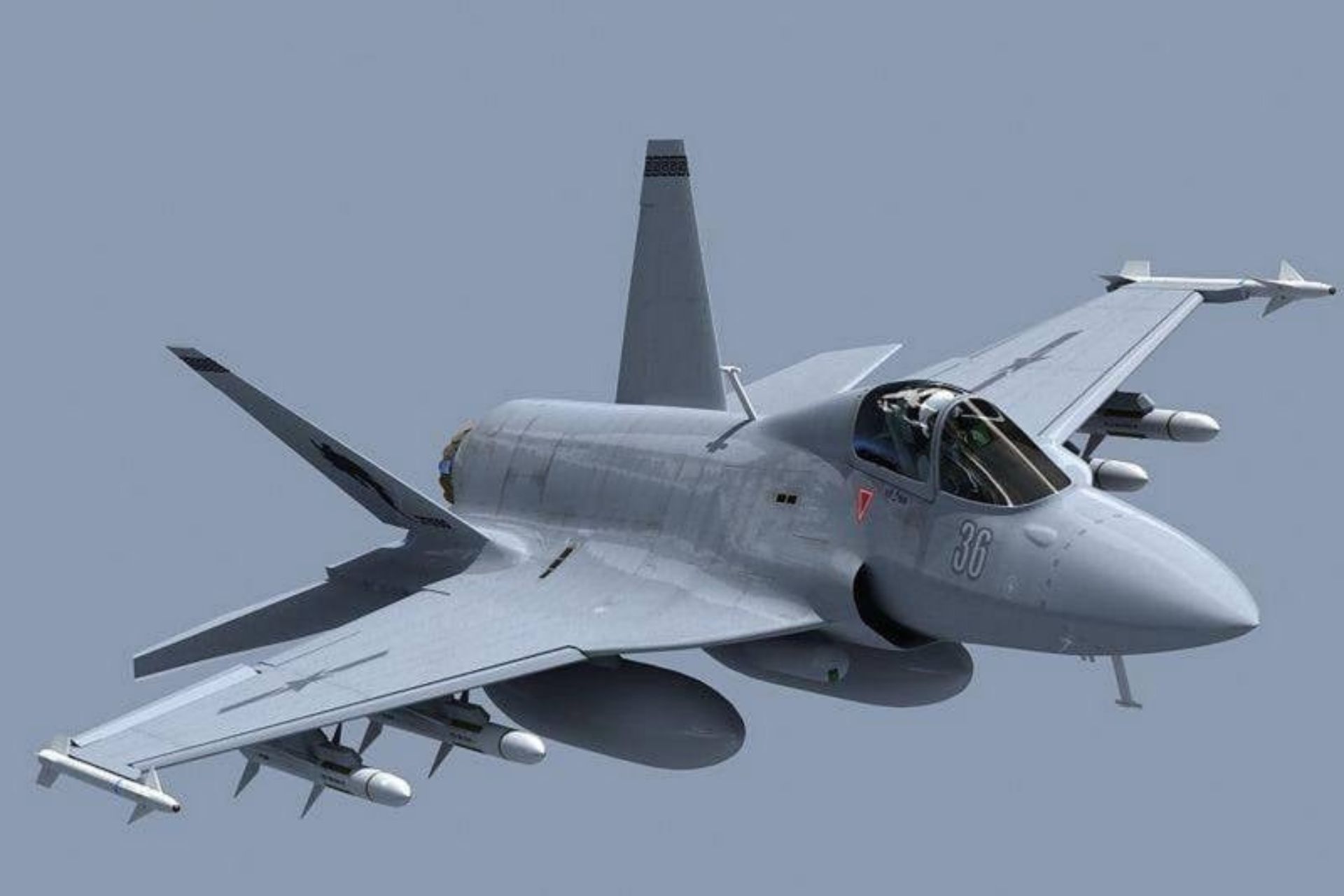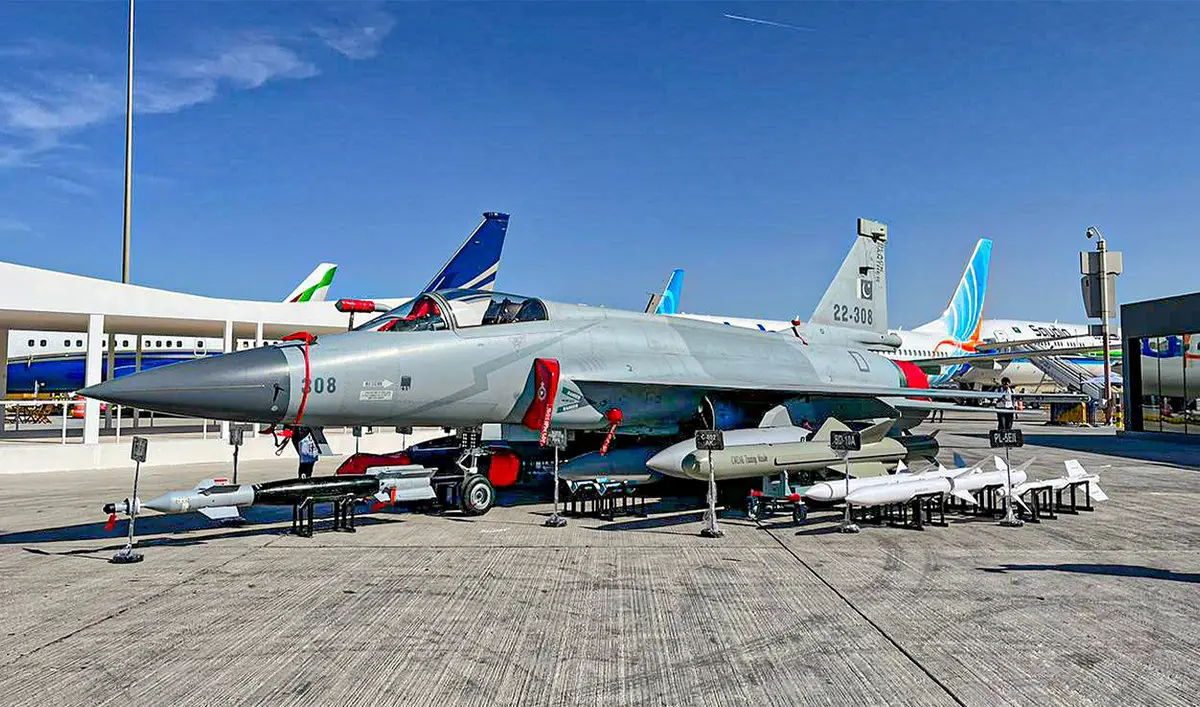Development Program for JF-17 PFX (Pakistan Fighter Experimental) Unveiled
The development program for Pakistan's JF-17 Pakistan Fighter Experimental (PFX) will elevate the fighter jet's capabilities beyond those of the JF-17 Block III variant, which is currently the most advanced and capable version of the aircraft.
(DEFENCE SECURITY ASIA) – Recognizing the need for continuous upgrades to the JF-17 “Thunder” fighter jet, Pakistan and its development partner China have launched a new development program called the JF-17 PFX (Pakistan Fighter Experimental).
This program aims to enhance the JF-17 to a level surpassing the capabilities of the JF-17 Block III variant, currently the most advanced and capable version of the fighter.
The JF-17 fighters are jointly developed by the Pakistan Aeronautical Complex (PAC) and China’s Chengdu Aircraft Industry Group (CAIG).
According to defense media reports, the JF-17 PFX is expected to be larger and heavier than the current JF-17 variants, placing it in a similar size and weight category to India’s Tejas MkII fighter jet.
The PFX will feature state-of-the-art technology, including advanced avionics, enhanced radar capabilities, and a higher weapons payload capacity, enabling it to undertake a wide range of combat missions.

Although specific details about the JF-17 PFX development remain scarce as the program is still in its early stages, Pakistan’s efforts signal its determination to maintain its air force as a dominant regional power.
The JF-17 PFX will ensure that the Pakistan Air Force (PAF) possesses a fighter jet capable of competing with, and potentially surpassing, the capabilities of other regional aircraft such as the Tejas MkII, Rafale, and Su-30MKI.
The PFX program is part of Pakistan’s broader strategy to modernize its air force and reduce reliance on foreign suppliers, aiming for greater self-sufficiency in defense production. Currently, PAC is responsible for producing 58 percent of the JF-17 airframe, with the remain
components manufactured by its Chinese partner. However, to ensure the long-term viability of the PFX, Pakistan will need to increase its domestic production capabilities, ultimately striving for complete self-reliance.
Achieving this will not only bolster Pakistan’s aerospace independence but also position the country as an emerging player in the global defense and aerospace industries.

At present, the Pakistan Air Force is believed to operate around 100 JF-17 Block I and Block II aircraft.
Recently, Defence Security Asia reported that production of the JF-17 Block III variant in Pakistan has exceeded 20 units and is nearing 30 aircraft, part of an ongoing order for the PAF.
The JF-17 Block III, the latest variant, first flew in 2019 and entered serial production in 2022.
Its most significant upgrades include the integration of the KLJ-7A Active Electronically Scanned Array (AESA) radar, a Helmet Mounted Display and Sight (HMD/S) system, and advanced Electronic Countermeasures (ECM).
In terms of armament, the Block III variant is capable of launching long-range PL-15E air-to-air missiles, with a claimed range of 145 km.

It can also deploy PL-10E High-Off Boresight air-to-air missiles, guided by the HMD/S during Within Visual Range (WVR) combat.
Reports also suggest that the JF-17 Block III is now equipped to launch the “Taimur” Air-Launched Cruise Missile (ALCM), capable of striking both static and moving targets, including warships, at distances up to 280 km.
The Block III variant reportedly shares similarities with China’s J-10C fighter, which is also in service with the Pakistan Air Force, and is said to incorporate elements of China’s fifth-generation J-20 “Mighty Dragon.” — DSA



Comments are closed.